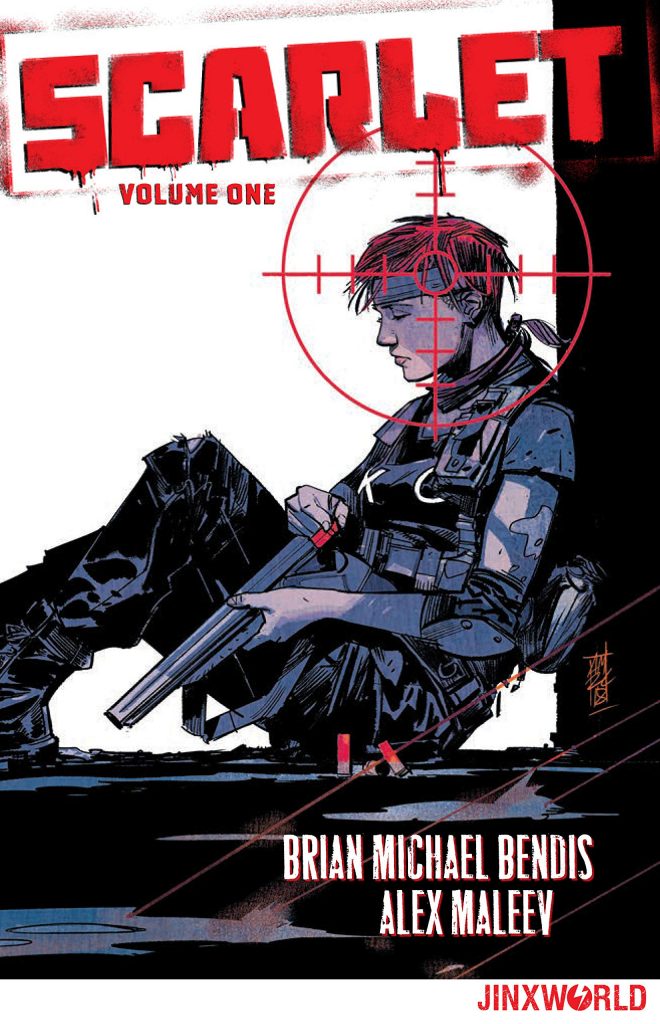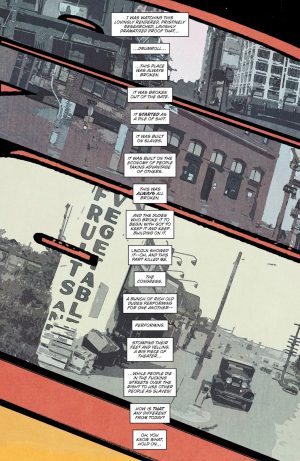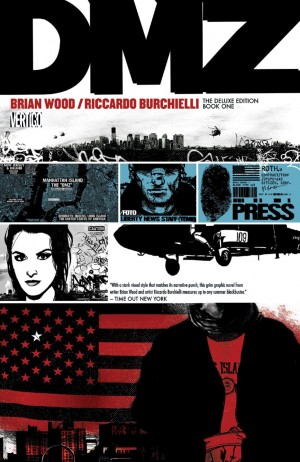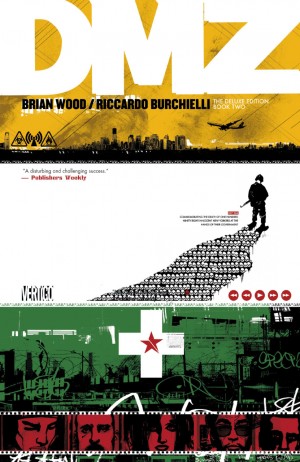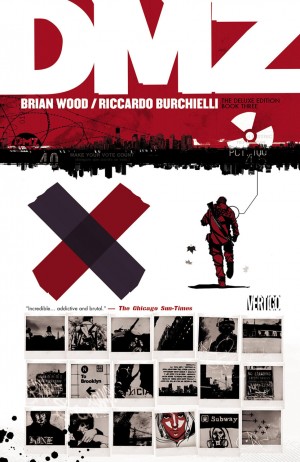Review by Frank Plowright
Despite being prominently titled Volume One, this is nothing of the sort, a deceitful marketing virtue being made of the delay since the previous chapters of Scarlet Rue’s story. This content continues from what was called Book Two, and in the eight years over which fifteen chapters of Scarlet’s story have appeared much in the real world has grown to reflect her circumstances.
Brian Michael Bendis has always loved dialogue, the rhythm of it, the words, the meanings, and the patterns. The love comes from film, and even his earliest writing brought an ear for the way people speak to comics, where, of course, you can’t actually hear them anywhere other than in your head. At his best he sets down glorious conversations with punctuations, stuttering and rich language. At his worst he’s infatuated with sounds in his head that only he hears, and the dialogue is almost irrelevant. Welcome to Scarlet, this volume featuring more incoherent pauses and swearing than anything Bendis has previously written. In places little sense is made.
It almost transmits that any plot is an irrelevancy, just the peg for Bendis to riff over, but what there is concerns the citizens of Portland mad as hell and not going to take it any more. They’re mad at institutionalised corruption and the blind eyes being turned, and in that Scarlet has an increasing relevancy. The revolution is personified by Scarlet and as this continuation begins there’s a standoff between the city she and her followers now control and the US establishment, scared to actually act because polling indicates widespread sympathy for Scarlet and her ideals. As that handbasket heads toward Hell, Scarlet soliloquises, that is if she’s not having conversations with a Navy Seal chock full of film references. Is there no editing?
Alex Maleev holds everything together, providing a consistent look and adapting his art to incorporate the vast swathes of dialogue. It’s nice that his cast isn’t glamorised, but noticeable that crowd scenes are nowhere near as packed as before. Perhaps that’s an unrealistic expectation, but Maleev set the standard.
A couple of events supply unexpected twists, but the jaw dropping is in reaction to Bendis believing what happens is remotely credible. Bendis began Scarlet before the multiple social protests across the USA, but claiming that Scarlet is fiction isn’t good enough when so much of it is now based on the real world. Revolutions in Portland? Possible as people are out there in quantity protesting about something every day, but what happens in the fourth chapter is the easy option to get from A to B, even when taking into account Scarlet’s previous planning and resourcefulness.
Each volume of Scarlet ends with the prevailing situation considerably ramped up, and that’s the case here, although it reaches a more predictable ending with real world parallels.
